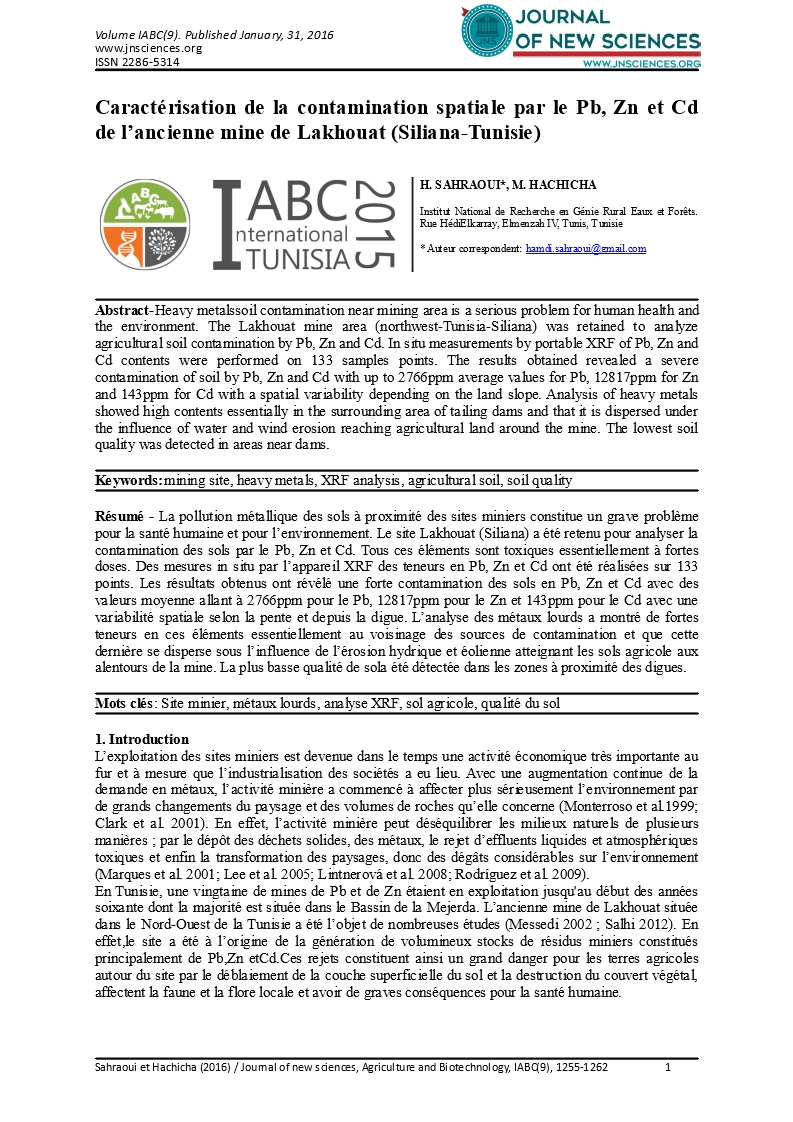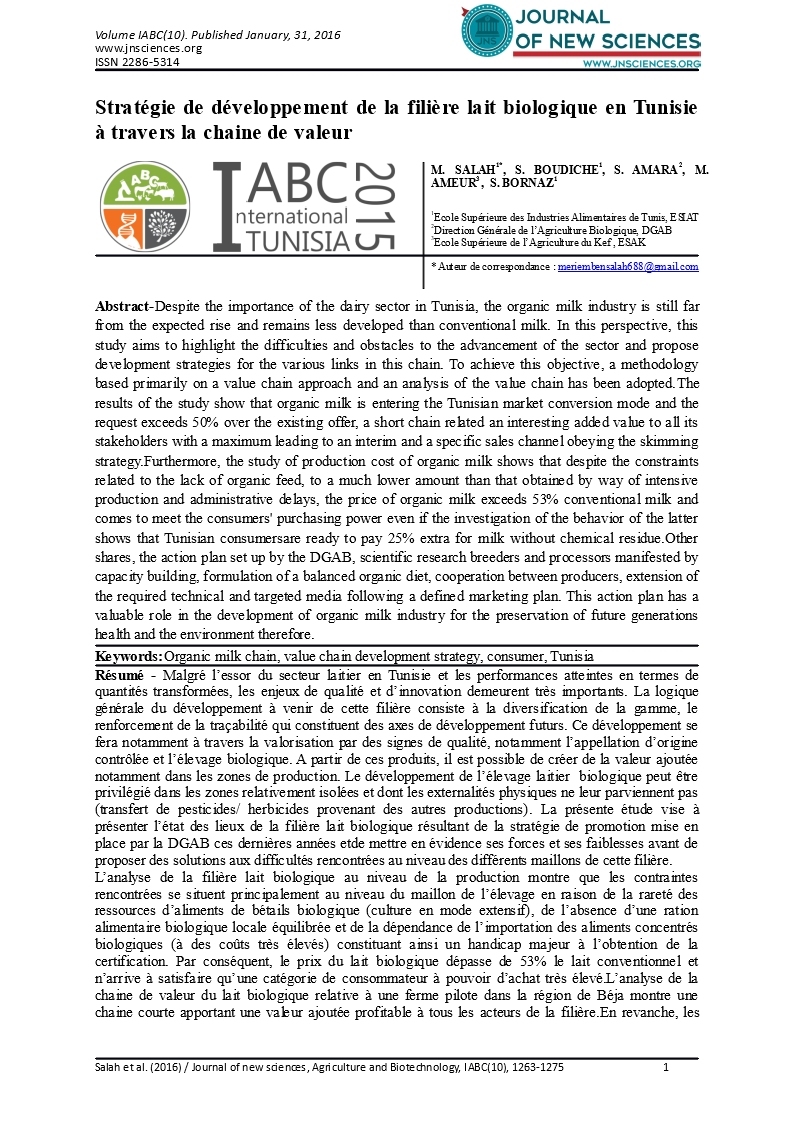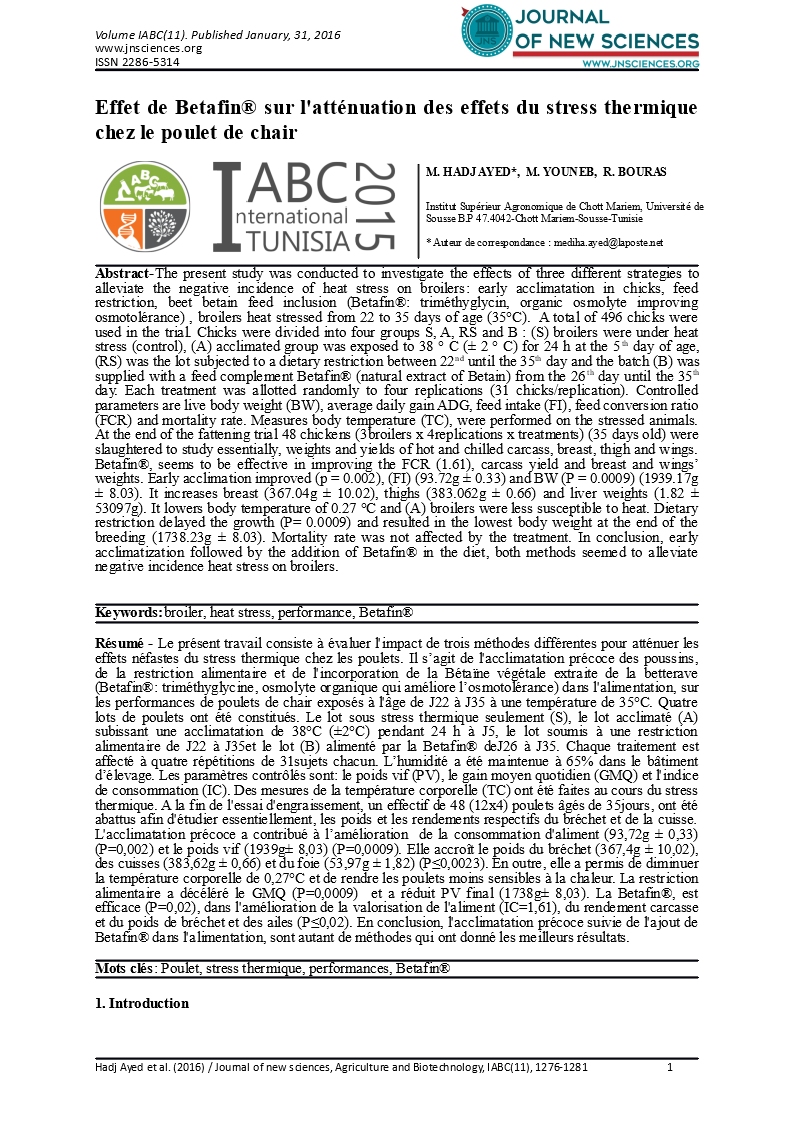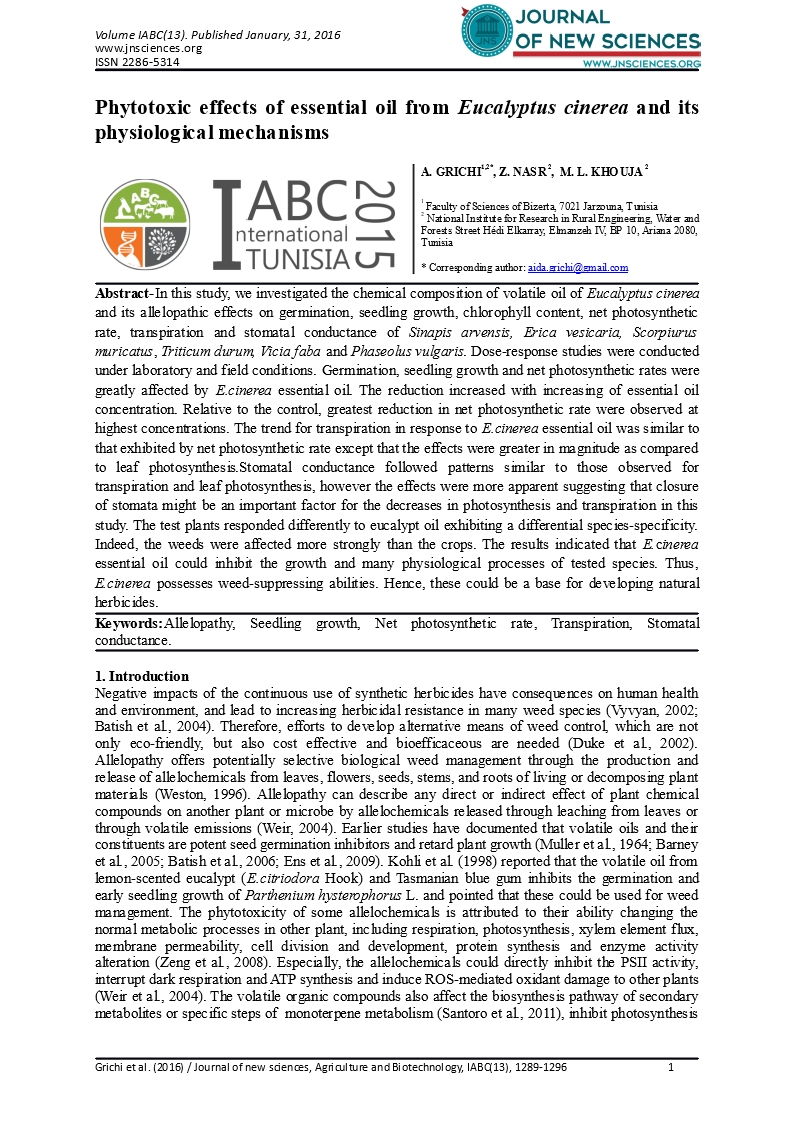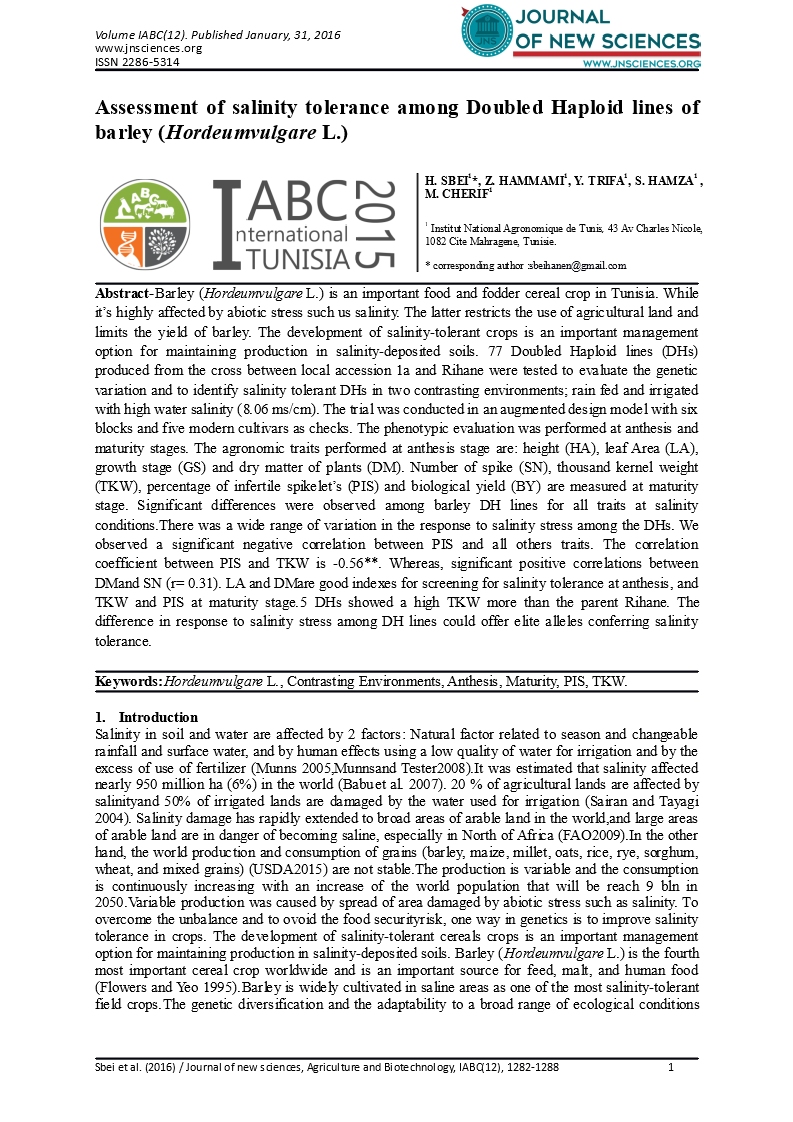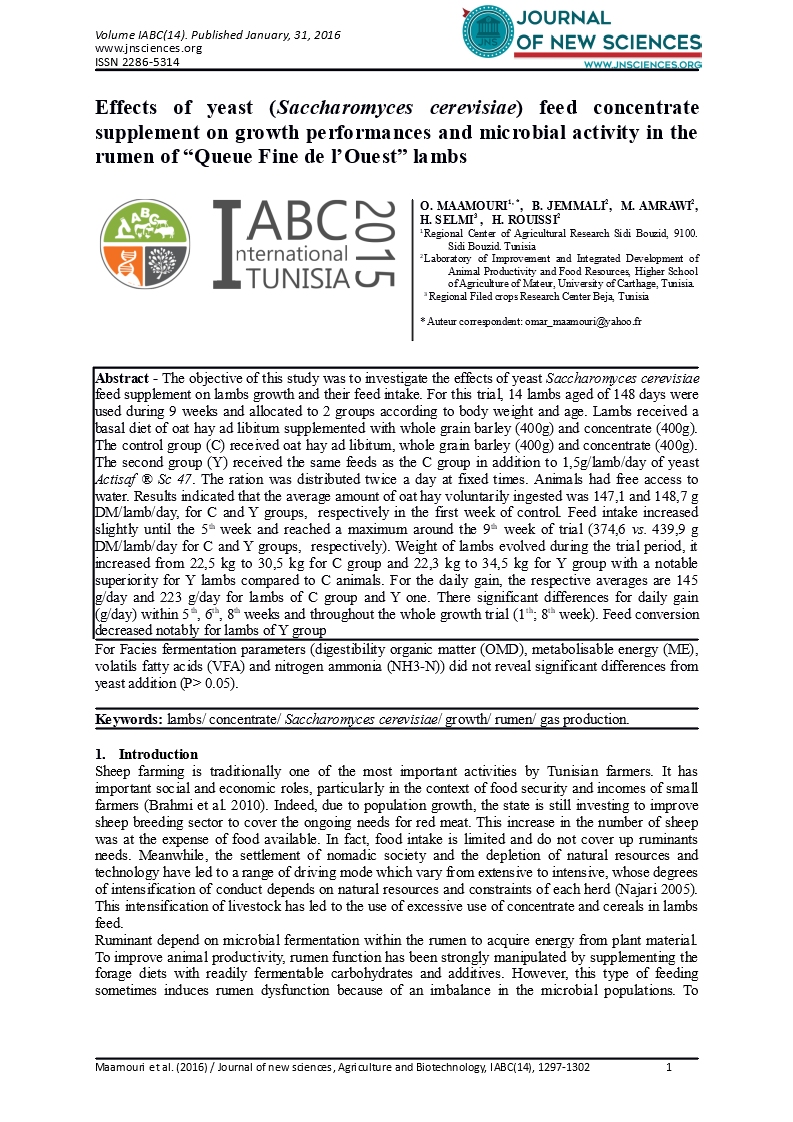- Category: Volume Spécial (Conférence IABC 2015)
- Hits: 7639
Etat actuel et perspective de développement de l’agriculture biologique dans les zones du Nord-Ouest tunisien
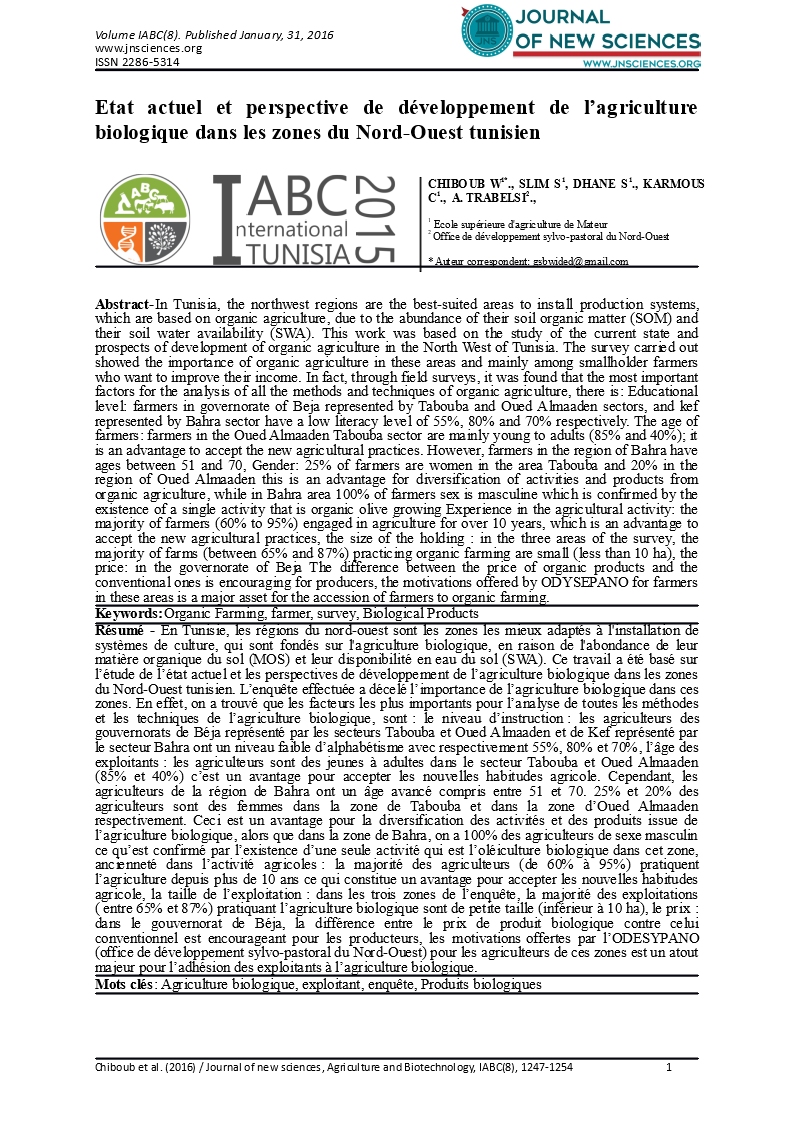
W. Chiboub 1*
S. Slim 1
S. Dhane 1
C. Karmous 1
A. Trabelsi2
1 Ecole supérieure d'agriculture de Mateur
2 Office de développement sylvo-pastoral du Nord-Ouest
Abstract-In Tunisia, the northwest regions are the best-suited areas to install production systems, which are based on organic agriculture, due to the abundance of their soil organic matter (SOM) and their soil water availability (SWA). This work was based on the study of the current state and prospects of development of organic agriculture in the North West of Tunisia. The survey carried out showed the importance of organic agriculture in these areas and mainly among smallholder farmers who want to improve their income. In fact, through field surveys, it was found that the most important factors for the analysis of all the methods and techniques of organic agriculture, there is: Educational level: farmers in governorate of Beja represented by Tabouba and Oued Almaaden sectors, and kef represented by Bahra sector have a low literacy level of 55%, 80% and 70% respectively. The age of farmers: farmers in the Oued Almaaden Tabouba sector are mainly young to adults (85% and 40%); it is an advantage to accept the new agricultural practices. However, farmers in the region of Bahra have ages between 51 and 70, Gender: 25% of farmers are women in the area Tabouba and 20% in the region of Oued Almaaden this is an advantage for diversification of activities and products from organic agriculture, while in Bahra area 100% of farmers sex is masculine which is confirmed by the existence of a single activity that is organic olive growing Experience in the agricultural activity: the majority of farmers (60% to 95%) engaged in agriculture for over 10 years, which is an advantage to accept the new agricultural practices, the size of the holding : in the three areas of the survey, the majority of farms (between 65% and 87%) practicing organic farming are small (less than 10 ha), the price: in the governorate of Beja The difference between the price of organic products and the conventional ones is encouraging for producers, the motivations offered by ODYSEPANO for farmers in these areas is a major asset for the accession of farmers to organic farming.
Keywords: Organic Farming, farmer, survey, Biological Products
Résumé - En Tunisie, les régions du nord-ouest sont les zones les mieux adaptés à l'installation de systèmes de culture, qui sont fondés sur l'agriculture biologique, en raison de l'abondance de leur matière organique du sol (MOS) et leur disponibilité en eau du sol (SWA). Ce travail a été basé sur l’étude de l’état actuel et les perspectives de développement de l’agriculture biologique dans les zones du Nord-Ouest tunisien. L’enquête effectuée a décelé l’importance de l’agriculture biologique dans ces zones. En effet, on a trouvé que les facteurs les plus importants pour l’analyse de toutes les méthodes et les techniques de l’agriculture biologique, sont : le niveau d’instruction : les agriculteurs des gouvernorats de Béja représenté par les secteurs Tabouba et Oued Almaaden et de Kef représenté par le secteur Bahra ont un niveau faible d’alphabétisme avec respectivement 55%, 80% et 70%, l’âge des exploitants : les agriculteurs sont des jeunes à adultes dans le secteur Tabouba et Oued Almaaden (85% et 40%) c’est un avantage pour accepter les nouvelles habitudes agricole. Cependant, les agriculteurs de la région de Bahra ont un âge avancé compris entre 51 et 70. 25% et 20% des agriculteurs sont des femmes dans la zone de Tabouba et dans la zone d’Oued Almaaden respectivement. Ceci est un avantage pour la diversification des activités et des produits issue de l’agriculture biologique, alors que dans la zone de Bahra, on a 100% des agriculteurs de sexe masculin ce qu’est confirmé par l’existence d’une seule activité qui est l’oléiculture biologique dans cet zone, ancienneté dans l’activité agricoles : la majorité des agriculteurs (de 60% à 95%) pratiquent l’agriculture depuis plus de 10 ans ce qui constitue un avantage pour accepter les nouvelles habitudes agricole, la taille de l’exploitation : dans les trois zones de l’enquête, la majorité des exploitations ( entre 65% et 87%) pratiquant l’agriculture biologique sont de petite taille (inférieur à 10 ha), le prix : dans le gouvernorat de Béja, la différence entre le prix de produit biologique contre celui conventionnel est encourageant pour les producteurs, les motivations offertes par l’ODESYPANO (office de développement sylvo-pastoral du Nord-Ouest) pour les agriculteurs de ces zones est un atout majeur pour l’adhésion des exploitants à l’agriculture biologique.
Mots clés: Agriculture biologique, exploitant, enquête, Produits biologiques

